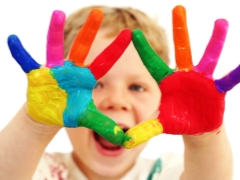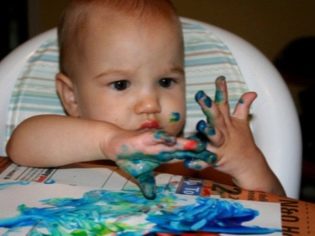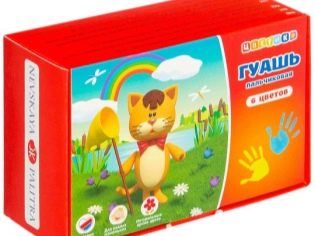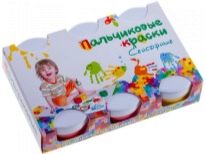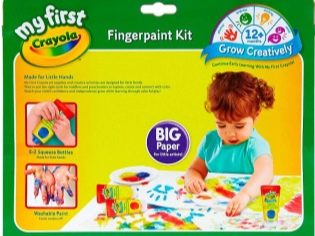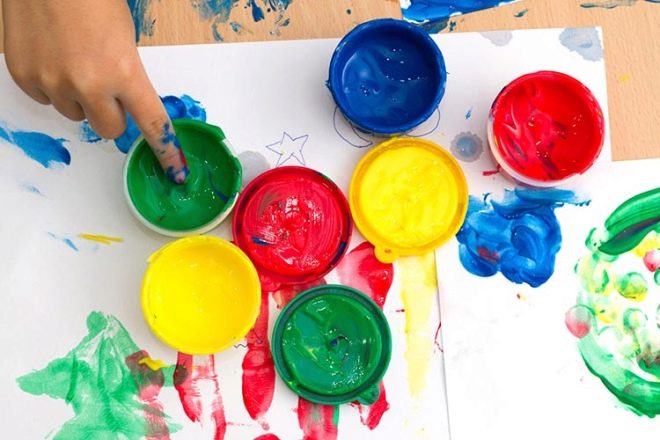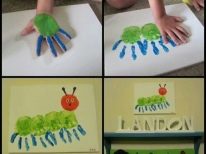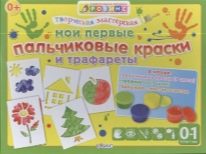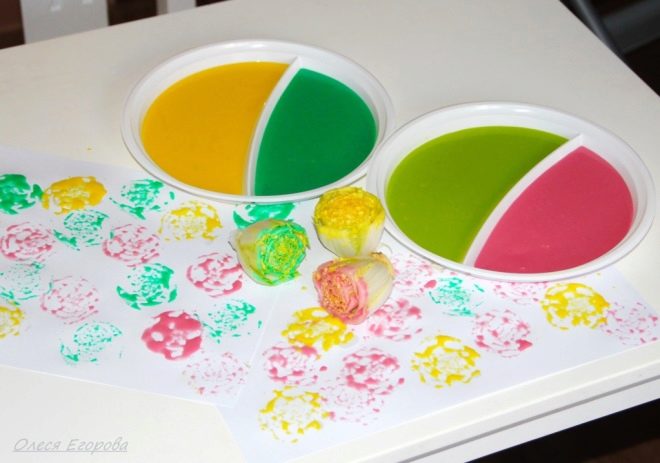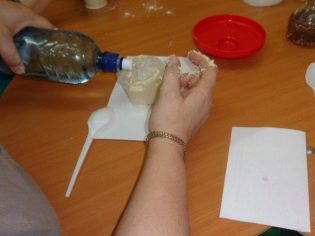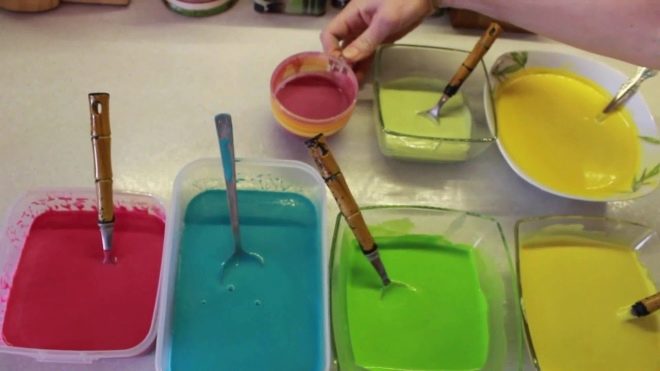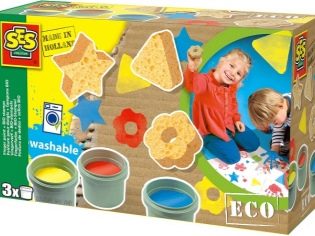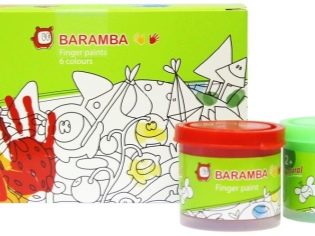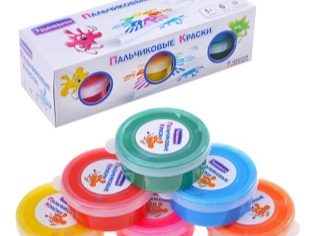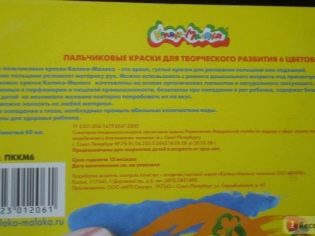Finger paints: advantages and features of use
The benefits of drawing for the comprehensive development of a child today are not questioned - experts believe that the earlier a child begins, the more developed he will grow, even if drawing is not his path.
Many parents, in an effort to provide the child with all the necessary opportunities, are in a hurry to buy drawing supplies as early as possible, however, both pencils and classical drawing brushes have one major drawback - the child must have enough developed motor skills of fingers to keep them in hand.
In addition, both options do not always guarantee the complete safety of the composition and the possibility of easy cleaning of objects not intended for painting from the surface, and pencils sometimes turn out to be too faded to interest the child. Therefore, in recent decades, experts have increasingly recommended to buy finger paints for babies.
What it is?
Finger paints - this is a rather unusual means for creativity, designed to quench children's craving for the bright and beautiful. Even the smallest child wants to draw something bright, and if he is not yet able to hold a brush or a pencil in his hands, it does not matter: you can use your hands directly!
Naturally, with this level of motor development, it is pointless to wait for the child to create any masterpieces. However, for the children of the age for which this product is intended (and these are babies from 1 year) important bright abstraction, not aesthetic plot.
Given the age of such young artists and their way of drawing, manufacturers should be especially careful to select the composition. Firstly, the recipe absolutely should not contain any harmful substances that can penetrate the body through the skin, since the hands of the child are not protected.
Options for finger paints for the smallest ones should suggest even theoretical edibility, although among the ingredients there must be a bitter place so that the kid does not use the product for other purposes.
Since this type of paint is created specifically for painting with your own body, it is not surprising that there is no question of observing any purity of the process. In such conditions It is fundamentally important that the dyes used are easily washed off both from the skin and clothing. It should be noted that some manufacturers of budget products still do not adhere to this rule, dictated by logic, so the choice of set should be approached with due care.,
Finally, for the real interest of the child, such colors just need to be as bright as possible - fading threatens to lose the children's interest. High mixing of different colors without the formation of dirt is also considered good.
Benefit and harm
The benefits of the use of finger paints lies on the surface - we list only some of the skills and abilities of the child, which will receive an additional incentive in their development due to this drawing:
- Artistic taste. Constant observation of bright colors is necessary for the child in order to learn the most correct perception of the surrounding world.
An artist, deprived of such a possibility in early childhood, will most likely be limited to black and white graphics and, although there is nothing wrong with the latter, it’s better to provide the child with all the possibilities - suddenly he will become a master of artistic color reproduction.
- Color perception. Modern bright life somewhat limits the capabilities of those people who do not see much difference between shades. Thanks to the early work with the brightest tones, the kid gets the opportunity to quickly learn to distinguish colors and their smallest shades. As a result, brain activity also improves.
- Motility. Although drawing with finger paints in view of its increased simplicity does not seem to be a suitable way for the development of physical activity, even such exercises with fingers can bear fruit. In the process of drawing, the child has to move his fingers more actively, due to which he will simply learn to hold the same brush in his hands.
- Mind. In the end, drawing is just a reassuring and entertaining activity. Thanks to him, the emotional background of both the baby and his parents is aligned, and after all, calm and good mood are two important qualities for ensuring good health.
If the paints are made in compliance with all standards of quality, then there is absolutely no harm from them. Problems are possible only if parents, in pursuit of savings, preferred low-quality goods, which may contain toxic or harmful components, and also leave persistent dirt on various surfaces.
Types and composition
Classic finger paints consist of traditional ingredients:
- pigments, giving the mass the desired color;
- water base;
- binders used to connect all the ingredients and make the mixture more dense.
The composition is balanced in such a way that the weight always remains soft, at the same time does not become fluid. Ideally, good finger paints consist solely of natural ingredients that do not harm the health of the baby - they are even edible, so manufacturers have to use special bitter flavors.
However, in varieties for children 3 years and older, some ingredients may be replaced by those that are undesirable for human consumption. The use of natural ingredients also contributes to ease of cleaning. - for example, paints based on aloe vera juice are usually very easily removed from the surface of clothes.
It should be noted that some finger paints can be signed as gouache or watercolor.
If it is written on the box that this set allows drawing directly by hand, it means that you can give preference to it, but this does not mean that any gouache or watercolor is suitable for such purposes.
Modern manufacturers do their best to diversify the range of their products, for the sake of which create new types of paint with unusual properties:
- Gel varieties do not dry the skin, due to which the best fit the smallest.
- Touch finger paints are supplemented with special particles, which give dried colors a different roughness, which further develops the child’s understanding of the surrounding world.
- Fluorescent paints are able to make any kid happy, because the drawings made with this material glow in the dark.
Since finger products are rarely designed for professional artists, they are sold exclusively in sets. The smallest will be quite enough of the minimum configuration of 4 colors, but it would be appropriate to choose a set with dies, allowing you to quickly depict a particular picture.
For a child from 3 years old, you can acquire more fully 12 colors that convey a picture of the world.
How old can I use?
Different manufacturers indicate on their products a different minimum age for using such creative materials, and parents on forums with their disparaging comments only confuse newcomers.
In general, the earliest age at which finger paints are at least theoretically relevant is 6 months. However, the benefits of such a parental venture are somewhat doubtful, since the physical activity of the child at this age is extremely limited. No conscious manufacturer will recommend paints for such tiny babies on their products - perhaps in pursuit of sales.
Usually it is written on the boxes that the product is intended for children from 1 year old - This means that use is possible even at an earlier age, but experts do not see the point.
It should be noted that Not all finger paints are completely safe. Products for children, which says "from 3 years old", most likely contains those components that are not desirable to pull in your mouth.
On the one hand, at this age, children are no longer so curious to try everything, on the other hand, parents should be on the alert.
How to use?
Unlike any other, finger paints do not provide instructions on how to paint a picture correctly - flowers or wood can be depicted in any accessible way.
Theoretically, in such a drawing process, parents should play an important role, which will help bring the child’s blurry design to a certain logical conclusion, along the way showing him how to create a meaningful masterpiece. There are several techniques of drawing paints of finger type, available for everyone.
Body parts
First of all, it is drawing with palms and fingers. For the baby of the first years of life, the end result is not as interesting as the process itself - it will gladly stain itself and stain all around. However, there is also an element of development in this, so you shouldn’t forbid the child to draw even by himself.
Sponge or sponge
Finger paints are perfectly absorbed into the porous structure of the sponge, and are also easily squeezed out from there, so you can offer your child such a somewhat unusual tool.
Prints and stencils
Many kits include special tools designed to simplify the creation of various art forms by the kid. These include various stamps and rollers, as well as stencil boards with slotted slits in the shape of something.
"Passepartu"
Artistic design in the work can be fully laid on the shoulders of parents. In this case, the child paints the paper base at her own discretion, whereas mom and dad should cut out some colored figures (sun, flowers, butterflies) from colored paper and simply put them on the base prepared by the child.
How to do it yourself?
Many parents believe that it is better to prepare their own finger paints at home, rather than trusting little-known recipes from manufacturers.
This process is simple, but it may interest the child, allows you to simply and inexpensively make an unlimited number of colors, and most importantly - one hundred percent guarantee the safety of the baby. Difficulties may arise due to the lack of sufficiently bright dyes or storage containers, but in general these issues are solvable.
In the world wide web you can find quite a lot of different home finger paint recipes, but in general the ingredients there are the same - only the proportions differ.
You need to mix a couple glasses of flour with a few tablespoons of salt (to taste, but the colors should be disgusting to taste - 5-7 tablespoons should be enough) and a couple of tablespoons of vegetable oil.
Then a couple of glasses of water are added. The final consistency should resemble sour cream in its density, with deviations from the norm, more flour is added for thickening, and water is used for liquefying.
After the mass is divided into parts for coloring in different colors, dyes are added to them. The latter can be both natural juices from vegetables and fruits, as well as various seasonings or even brilliant green, although many prefer to use purchased food colors. To store such a homemade product you need in the refrigerator, in hermetically sealed jars.
There is an even simpler recipe, which implies the addition of pigments to ordinary yogurt, however, such paints will naturally remain edible, due to which they are able to provoke a child to eat them. Parents often do not see this as a problem, however, a habit that has been developed may lead the child to lick brushes and other drawing supplies in the future.
If this recipe is liked the most and is planned for use, it should be borne in mind that the resulting paint should be used as quickly as possible, since they do not have a long shelf life.
Brand Rating
Many parents still prefer to rely on the experience of manufacturers - they are sure that if you trust a trusted company, it will not let you down. In many respects this is true - companies with a worldwide reputation really gained such popularity, however, to acquire safe paints for your own child, you need to understand brands.
Products of European and American production, which have reached the domestic markets, are traditionally distinguished by high prices and corresponding quality. American paints Crayola are considered the best balanced option - they are safe, bright, and easily washable.
Similar properties and Spanish Jovi, although reviews are repeated - their colors are still more faded.
Dutch paints Ses differ extremely responsible selection of the composition, allowing to please even children with allergies to everything around, but the cleaning process may be more difficult.
Other foreign suppliers include brands. Artberry and Baramba.
For nearly three decades in our country, Chinese products, which are notable for their very low cost, have enjoyed consistently high demand. Some of its varieties, such as "Razvivashki", at the same time they also have quite good operational properties, while others - such as "Orange Elephant", disappointing because they do not have enough brightness.
As for domestic products, it is at its usual level. Relatively good colors can only be called "Flower", and even they have a pronounced disadvantage - they are difficult to wash. Brands with promising names like "Kalyaka-Malyaka" or "Kids", Objectively do not deserve consumer attention.
Which is better to choose?
In the selection process, one should focus not only on some subjective preferences, but also on certain factors having an objective assessment. The very first children's finger paints for infants should absolutely not contain any harmful components, they should consist of practically only pigment and water. After reaching the age of three, the composition can already vary somewhat.
To paint in the bathroom, you should choose gel paints in jars, because they do not dry the skin, and special gouache in tubes for such purposes will suit much less.
When choosing the first set, you should not chase after the variety of colors and large volumes - 6 colors are enough for the beginning of creativity, and a large number may be unnecessary if the child does not appreciate the new entertainment or it disappoints parents with its quality.
Contrary to adoration of the brightest colors by children, one should avoid sets with “neon” tones - there are no such dyes in nature, so this is most likely a synthetic product of dubious origin. However, strongly pale colors cannot be bought too - they will not interest the baby.
It is necessary to carefully study what is written on the package - at least once again re-read the instructions for use and pay attention to the shelf life and composition, as well as specify the manufacturer's name.
How to paint with finger paints, see the next video.
